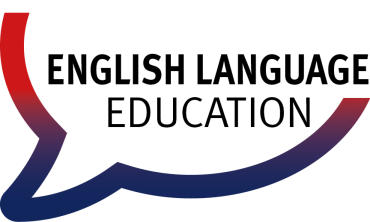PROF. DR. DAGMAR BARTH-WEINGARTEN, SUSANNE REINHARDT & PROF. DR. BRITTA FREITAG-HILD
Oracy in English as a Foreign Language: Assessing Speaking Skills from a Conversation-Analytic Perspective
Ever since Wilkinson's (1965) conceptualization of oracy has been adopted by educational theory (e.g. Verma et al. 1995: 155), children’s development of oral skills has been paid increasing attention to (e.g. Alexander 2013). Research on “speaking skills” has, however, also come to point out the relevance of additional, interactional skills, seeing that speaking is, most often, not a one-sided process. Next to a range of cognitive challenges – even more so for foreign-language (FL) learners - communicative language teaching (e.g., Johnson/Morrow 1981) has increasingly acknowledged the relevance of communicative competence (Hymes 1972, Canale/Swain 1980, also Goh/Burns 2012: 53). Discourse, sociolinguistic and strategic competences are also increasingly reflected in rating criteria (e.g. Council of Europe 2018). Unfortunately, there are as yet few actual assessment grids available that seem to be manageable under everyday classroom conditions. Moreover, to date few FL teachers are actually trained to assess these skills. At Potsdam University, we are currently providing the fifth cohort of trainee teachers of English as a FL with the basic skills needed for assessing interactional competencies in two parallel courses offered collaboratively by our English linguistics and TEFL department. Our paper aims to outline 1) the issues involved in assessing interactional skills, 2) how we deal with them in our courses, and 3) an assessment grid we help our students develop for later use. Our work is thus practice-oriented in a rather applied sense. Our approach is mainly based on a branch of SLA research which profits from Conversation Analysis (e.g. Sidnell/Stivers 2013) (CA-SLA, e.g. Markee/Kunitz 2015). For illustrating our approach, we will focus on FL learners’ repair skills and show, e.g., that ‘dysfluency markers’, rather than being a sign of limited speaking skills (e.g. Bosker et al. 2013), may display a learner’s burgeoning interactional skills – their increasing ability to deal with and resolve their own issues of speaking, whether these be linguistic errors, finding the ‘right’ word, or planning their entire utterance (e.g., Gardner 2007, Pekarek Doehler/Pochon-Berger 2015).
- Alexander, R. J. (2013): Improving oracy and classroom talk: achievements and challenges. Primary First, 22–29. (http://eprints.whiterose.ac.uk/76321/ (access Jan 26, 2021))
- Bosker, H. R., Pinget, A.-F., Quené, H., Sanders, T./ de Jong, N. H. (2013). What makes speech sound fluent? The contributions of pauses, speed and repairs. Language Testing 30(2), 159–175.
- Canale, M./ Swain, M. (1980). Theoretical Bases of Communicative Approaches to Second Language Teaching and Testing. Applied Linguistics 1(1), 1–47.
- Council of Europe (2018). Common European Framework of Referencing for Languages: learning, Teaching, Assessment. Companion volume with new descriptors. (www.coe.int/lang-cefr. (access Sept 3, 2020)).
- Gardner, R. (2007). ‘Broken’ Starts: Bricolage in Turn Starts in Second Language Talk. In Hua, Z., Seedhouse, P., Wei, L./ Cook, V. (Eds.), Language Learning and Teaching as Social Inter-Action. London: Palgrave Macmillan, 58–71.
- Goh, C. C. M./ Burns, A. (2012). Teaching speaking: A holistic approach. Cambridge: Cambridge University Press.
- Hymes, D.H. (1972). Toward ethnographies of communication. In Giglioli, P.P. (ed.), Language and social context. Harmondsworth: Penguin, 21–44.
- Johnson, K./Morrow, K. (eds.) (1981): Communication in the classroom: Applications and methods for a communicative approach. London: Longman. In: Markee, N./ Kunitz, S. (2015). CA-for-SLA studies: Quo vadis. In Markee, N. (ed.), The handbook of classroom discourse and interaction. Malden, MA: Wiley Blackwell, 425–439.
- Pekarek Doehler, S./ Pochon-Berger, E. (2015). The development of L2 interactional competence: evidence from turn-taking organization, sequence organization, repair organization and preference organization. In Cadierno, T./ Wind Eskildsen, S. (eds.), Usage-Based Perspectives on Second Language Learning. Berlin, Boston: De Gruyter Mouton, 233–268.
- Sidnell, J./ Stivers, T. (Eds.) (2013). The Handbook of Conversation Analysis. Oxford: Wiley Blackwell.
- Verma, M. K., Corrigan, K. P./ Firth, S. (1995). Working with Bilingual Children: Good Practice in the Primary Classroom. Clevedon, Avon: Multilingual Matters Ltd.
- Wilkinson, A. (1965). Spoken English. Birmingham: University of Birmingham Press.
Dagmar Barth-Weingarten is Professor of Present-Day English Language and Linguistics at the University of Potsdam (Germany). Her research takes an interactional-linguistic perspective and centers around grammar and prosody in everyday social interaction. More recently, it also includes the description and assessment of interactional skills of learners of English as a foreign language aiming to help improve teacher training.
Susanne Reinhardt is a teaching assistant and PhD candidate at the chair of Present-Day English Language and Linguistics (University of Potsdam, Germany). In her dissertation, she adopts a conversational-analytic/interactional-linguistic approach to SLA in order to investigate how language learners' interactional competence, in particular their repair skills, can be seen to develop over time.


